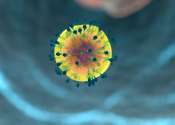Laboratory-based model of acute kidney injury replicates basic mechanisms of disease
By filtering waste products and toxins from the urine, the kidney is one of the most important players in human metabolism. It is estimated that several million patients worldwide die each year from renal disease. When a ...
2 hours ago
0
3









